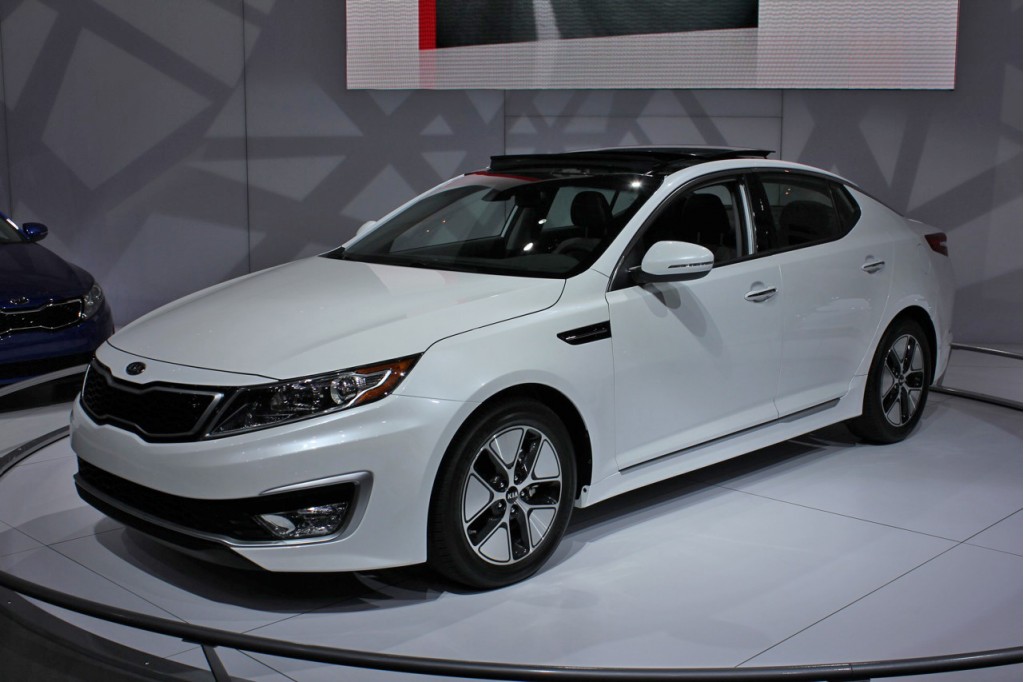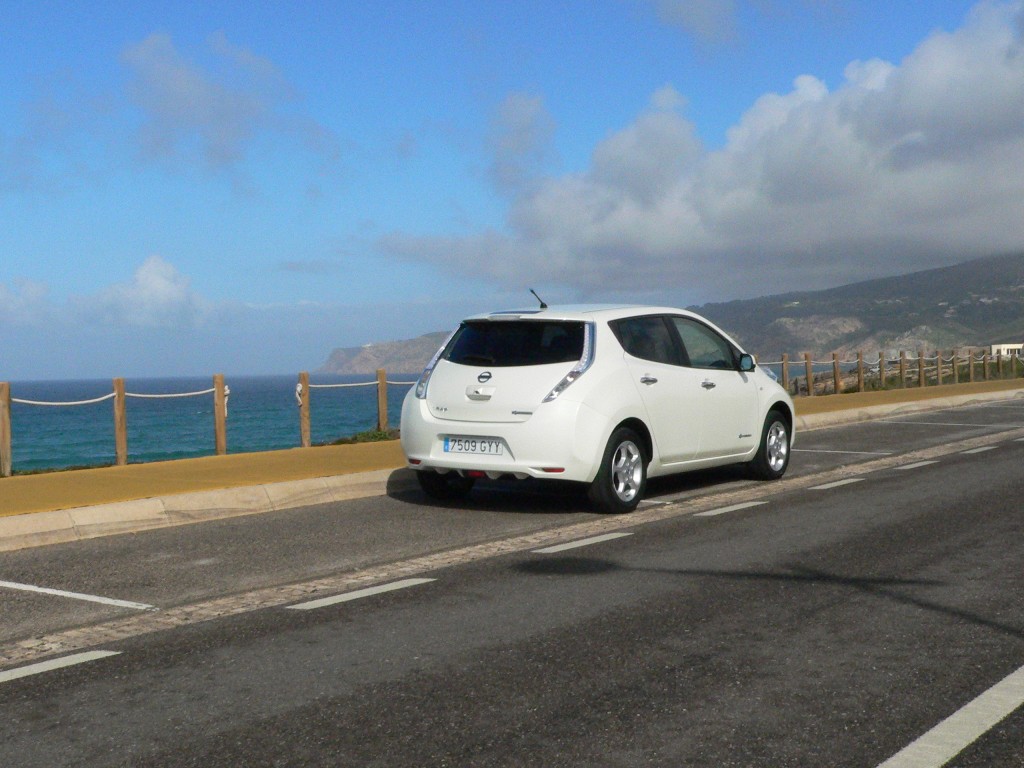It looks like carmakers are going to make their quiet, electrically powered cars a lot noisier.
And that's going to happen regardless of whether there's any actual data to support the notion that electric cars are so silent they pose a hazard to blind pedestrians.
As of now, three different automakers have taken three different approaches, with more likely to be on the way in future models.
Warbles, blips, or fake engine noises?
The 2011 Nissan Leaf electric car automatically makes a kind of futuristic electronic warbling sound up to 12 miles per hour. Beyond that speed, tire noise suffices, said Mark Perry, Nissan North America's director for product planning and advanced technology.

2011 Kia Optima Hybrid
The 2011 Chevrolet Volt extended-range electric vehicle, on the other hand, uses a driver-actuated alert system on the left column stalk that blips the horn several times quickly. GM worked with the National Federation of the Blind on that pedestrian warning device.
Now, the new 2011 Kia Optima Hybrid introduced at last week's 2010 Los Angeles Auto Show adds a third variation: a straight-out synthesized engine noise that kicks in whenever the car is running in all-electric mode at 12 mph or below.
Making your hybrid a spaceship
A much greater variety of options is offered by the HALOsonic External Electronic Sound Synthesis system, prototyped by Lotus Engineering but not yet implemented in any production vehicles. It can produce a range of different noises for drivers to select among, from a droning buzz to the simulated exhaust sounds of a variety of virtual engines.

2011 Nissan Leaf
Among the possibilities are a couple of noises that make a Toyota Prius hybrid sound like a spaceship. Which we much prefer to fake engine sounds.
Thus far, Japanese colussus Toyota hasn't weighed in with a noise-making technology. That company has built and sold roughly two-thirds of the hybrid-electric vehicles on the planet today, so whatever solution it chooses will carry major weight--strictly on volume.
Flawed legislation?
Legislation appears to be on the way nonetheless. Section 109 of the proposed Motor Safety Act of 2010--now in front of the U.S. Senate's Commerce, Science, and Transportation Committee--includes provisions to require "new electric or hybrid vehicles to provide an alert sound” at less than 20 mph.
There are at least two flaws here. First, the laws don't even try to define the problem--danger from quiet vehicles--objectively, perhaps via perceived decibel levels at specific distances. And, second, it ignores any hazards posed by quiet gasoline cars, by singling out just two types of vehicles (hybrids and electrics) that it deems dangerous.













